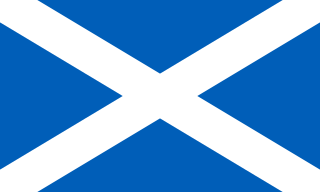 W
WList of Scots is an incomplete list of notable people from Scotland.
 W
WEarl of Airlie is a title of the peerage in Scotland created on 2 April 1639 for James Ogilvy, 7th Lord Ogilvy of Airlie, along with the title “Lord Ogilvy of Alith and Lintrathen.” The title “Lord Ogilvy of Airlie” was then been created on 28 April 1491.
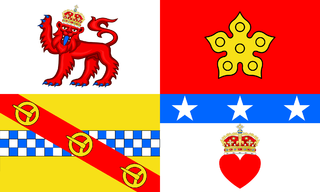 W
WThe Mormaer or Earl of Angus was the ruler of the medieval Scottish province of Angus. The title, in the Peerage of Scotland, is held by the Duke of Hamilton, and is used as a courtesy title for the eldest son of the Duke's eldest son.
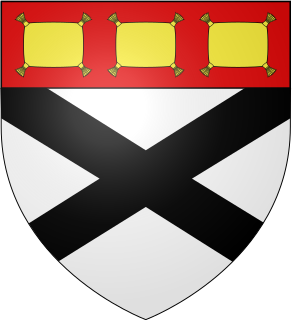 W
WEarl of Annandale and Hartfell is a title in the Peerage of Scotland, created in 1661 for James Johnstone.
 W
WViscount of Arbuthnott is a title in the Peerage of Scotland. It was created in 1641, along with the subsidiary title Lord Inverbervie, for Sir Robert Arbuthnott. The Viscount of Arbuthnott is the hereditary chief of Clan Arbuthnott.
 W
WThe Bearer of the National Flag of Scotland is one of the Great Officers in the Royal Household of Scotland. The bearer participates in royal, state, or other ceremonial events when needed.
 W
WThe Bearer of the Royal Banner is one of the Great Officers of the Royal Household in Scotland. The bearer participates in royal, state, and other ceremonial events when needed.
 W
WThe title Duke of Buccleuch, formerly also spelt Duke of Buccleugh, is a title in the Peerage of Scotland created twice on 20 April 1663, first for James Scott, 1st Duke of Monmouth and second suo jure for his wife Anne Scott, 4th Countess of Buccleuch. Monmouth, the eldest illegitimate son of Charles II was attainted after his 1685 rebellion, but his wife's title was unaffected and passed on to their descendants, who have successively borne the surnames Scott, Montagu-Scott, Montagu Douglas Scott and Scott again. In 1810, the 3rd Duke of Buccleuch inherited the Dukedom of Queensberry, also in the Peerage of Scotland, thus separating that title from the Marquessate of Queensberry.
 W
WThis page is concerned with the holders of the forfeit title Earl of Douglas and the preceding feudal barons of Douglas, South Lanarkshire. The title was created in the Peerage of Scotland in 1358 for William Douglas, 1st Earl of Douglas, son of Sir Archibald Douglas, Guardian of Scotland. The Earldom was forfeited by James Douglas, 9th Earl of Douglas in 1455.
 W
WEarl of Dundonald is a title in the Peerage of Scotland. It was created in 1669 for the Scottish soldier and politician William Cochrane, 1st Lord Cochrane of Dundonald, along with the subsidiary title of Lord Cochrane of Paisley and Ochiltree, with remainder to his heirs male, failing which to his heirs female without division who should bear or assume the name of Cochrane, and in failure thereof to his heirs general. In 1647, he had already been created Lord Cochrane of Dundonald in the Peerage of Scotland, with remainder to the heirs male of his body.
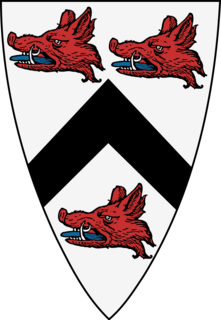 W
WLord Elphinstone is a title in the Peerage of Scotland created by King James IV in 1510.
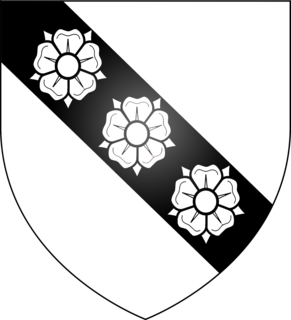 W
WViscount Falkland is a title in the Peerage of Scotland. Referring to the royal burgh of Falkland in Fife, it was created in 1620, by Scottish King James VI, for Sir Henry Cary, although he was actually English and had no connection to Scotland. He was made Lord Cary at the same time, also in the Peerage of Scotland. His son, the second Viscount, was a prominent statesman. The latter's younger son, the fourth Viscount, notably served as Lord Lieutenant of Oxfordshire. His son, the fifth Viscount, represented several constituencies in the House of Commons and held office as First Lord of the Admiralty from 1693 to 1694. The Falkland Islands in the south Atlantic are named after him.
 W
WDuke of Fife is a title in the Peerage of the United Kingdom which has been created twice, in both cases for Alexander, 1st Duke of Fife and 6th Earl Fife, who in 1889 married Louise, Princess Royal, the eldest daughter of Albert Edward, Prince of Wales, the future King Edward VII.
 W
WThe lords of Galloway consisted of a dynasty of heirs who were lords and ladies who ruled over Galloway in southwest Scotland, mainly during the High Middle Ages. Many regions of Scotland, including Galloway and Moray, periodically had kings or subkings, similar to those in Ireland during the Middle Ages. The Scottish monarch was seen as being similar to a high king. The lords of Galloway would have either paid tribute to the Scottish monarch, or at other times ignored him. The Lords of Galloway are fairly well recorded in the 12th and 13th centuries, but the records are incomplete or conflicting at other times. Later on, the kings were known as "lords" at the Scottish court, and "kings" at home, finally becoming "lords" in both arenas.
 W
WThe Great Seal of Scotland allows the monarch to authorise official documents without having to sign each document individually. Wax is melted in a metal mould or matrix and impressed into a wax figure that is attached by cord or ribbon to documents that the monarch wishes to make official. The earliest seal impression, in the Treasury of Durham Cathedral, is believed to be the Great Seal of Duncan II and dates to 1094.
 W
WThe Guardians of Scotland were regents who governed the Kingdom of Scotland from 1286 until 1292 and from 1296 until 1306. During the many years of minority in Scotland's subsequent history, there were many guardians of Scotland and the post was a significant constitutional feature in the course of development for politics in the country.
 W
WDuke of Hamilton is a title in the Peerage of Scotland, created in April 1643. It is the senior dukedom in that Peerage, and as such its holder is the Premier Peer of Scotland, as well as being head of both the House of Hamilton and the House of Douglas. The title, the town of Hamilton in Lanarkshire, and many places around the world are named after members of the Hamilton family. The ducal family's surname, originally "Hamilton", is now "Douglas-Hamilton". Since 1711, the Dukedom has been held together with the Dukedom of Brandon in the Peerage of Great Britain, and the Dukes since that time have been styled Duke of Hamilton and Brandon, along with several other subsidiary titles.
 W
WThe Most Ancient and Most Noble Order of the Thistle was founded in 1687. Dates shown are for election or installation. Probably incomplete.
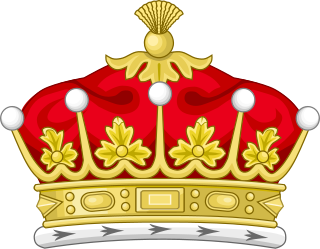 W
WThe title Mormaer or Earl of Mar has been created several times, all in the Peerage of Scotland. Owing to a 19th-century dispute, there are currently two Earls of Mar as both the first and seventh creations are currently extant. The first creation of the earldom was originally the provincial ruler of the province of Mar in north-eastern Scotland. First attested in the year 1014, the "seat" or "caput" eventually became Kildrummy Castle, although other sites like Doune of Invernochty were initially just as important.
 W
WEarl of Melville is a title in the Peerage of Scotland. It was created in 1690 for the Scottish soldier and statesman George Melville, 4th Lord Melville. He was made Lord Raith, Monymaill and Balwearie and Viscount of Kirkcaldy at the same time, also in the Peerage of Scotland. He married Catherine Leslie, daughter of Alexander Leslie, Lord Balgonie, and granddaughter of Alexander Leslie, 1st Earl of Leven. Lord Melville was succeeded upon his death in 1707 by his eldest surviving son, David, who already in 1681 had succeeded to the earldom of Leven through his mother. The two earldoms have since remained united. For further history of the titles, see Earl of Leven.
 W
WEarl of Minto, in the County of Roxburgh, is a title in the Peerage of the United Kingdom. It was created in 1813 for Gilbert Elliot-Murray-Kynynmound, 1st Baron Minto. The current earl is Gilbert Timothy George Lariston Elliot-Murray-Kynynmound, 7th Earl of Minto.
 W
WThe monarch of Scotland was the head of state of the Kingdom of Scotland. According to tradition, the first King of Scots was Kenneth I MacAlpin, who founded the state in 843. The distinction between the Kingdom of Scotland and the Kingdom of the Picts is rather the product of later medieval myth and confusion from a change in nomenclature i.e. Rex Pictorum becomes Rí Alban under Donald II when annals switched from Latin to vernacular around the end of the 9th century, by which time the word Alba in Scottish Gaelic had come to refer to the Kingdom of the Picts rather than Great Britain.
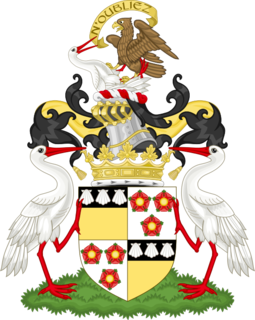 W
WDuke of Montrose is a title that has been created twice in the Peerage of Scotland. The first creation was in 1488 for David Lindsay, 5th Earl of Crawford. He was forced to forfeit the dukedom later in 1488, but it was restored to him in 1489, although only for his lifetime. Thus, it was not inherited.
 W
WThe Duke of Roxburghe is a title in the peerage of Scotland created in 1707 along with the titles Marquess of Bowmont and Cessford, Earl of Kelso and Viscount Broxmouth. John Ker, 5th Earl of Roxburghe became the first holder of these titles. The title is derived from the royal burgh of Roxburgh in the Scottish Borders that in 1460 the Scots captured and destroyed.
 W
WThe Royal Company of Archers is a ceremonial unit that serves as the Sovereign's Bodyguard in Scotland, a role it has performed since 1822 during the reign of King George IV, when the company provided a personal bodyguard to the King on his visit to Scotland. It is currently known as the Queen's Bodyguard For Scotland, and is located in Edinburgh, the capital city. The Royal Company of Archers has a long history in Scotland as a body that celebrated both the recreation and talent of local archers. As a body established by the Monarch, the Company has a long history of unique prizes, influential supporters, and ceremonial roles.
 W
WEarl of Selkirk is a title in the Peerage of Scotland. Its descent is subject to unusual provisions.
 W
WEarl of Southesk is a title in the Peerage of Scotland. It was created in 1633 for Sir David Carnegie, an Extraordinary Lord of Session. He had already been created Lord Carnegie of Kinnaird in 1616 and was made Lord Carnegie, of Kinnaird and Leuchars, at the same time he was given the earldom. These titles are also in the Peerage of Scotland. The earldom is named after the River South Esk in Angus. Carnegie's younger brother John Carnegie was given the corresponding title: earl of Northesk. The earl of Southesk also holds the Scottish feudal title of Baron of Kinnaird and is a baronet in the Baronetage of Nova Scotia.
 W
WEarl of Sutherland is a title in the Peerage of Scotland. It was created circa 1230 for William de Moravia and is the premier earldom in the Peerage of Scotland. The Earl or Countess of Sutherland is also the Chief of Clan Sutherland.
 W
WThe Sutherlands of Forse were a minor Scottish noble family. Kenneth Sutherland, 1st of Forse was the second son of William de Moravia, 5th Earl of Sutherland. They were a cadet branch of the Clan Sutherland.